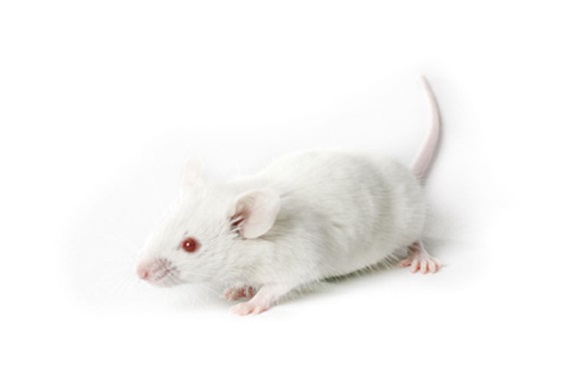
Type 1 diabetes (T1D), also called insulin-dependent diabetes mellitus (IDDM), is characterized by the autoimmune destruction of pancreatic beta cells. As a result, patients produce inadequate amounts of insulin. In Vivo Pharmacology Services at JAX performs efficacy studies using the spontaneous NOD/ShiLtJ (001976) and STZ-inducible Type 1 Diabetes mouse models.
| Phenotype | STZ Models C57BL/6J (JR# 000664) Inducible | NOD/ShiLtJ (JR# 001976) Spontaneous | Method |
|---|---|---|---|
| Blood Glucose | ✓ | ✓ | Glucometer |
| Urine Glucose | ✓ | ✓ | Diastix |
| Serum Insulin | ✓ | ✓ | ELISA |
| Insulitis | x | ✓ | H&E Staining |
| Pancreatic Lymph Node Phenotyping | x | ✓ | Flow Cytometry |
| Serum Cytokines | x | ✓ | Meso Scale Discovery |
| Pancreatic Islet Phenotyping | ✓ | ✓ | qPCR/Simple Wes |
| Pancreatic B-Cell Apoptosis | ✓ | ✓ | TUNEL IHC |
| Diabetic Retinopathy | ✓ | x | Retinal Flat Mount Staining and Microscopy |
| Diabetic Nephropathy | ✓ | x | Urine ACR/Kidney Pathology |
Example Efficacy Study Using STZ-Inducible Model:
- Male C57BL/6J mice, 6-8 weeks of age
- Clinical parameters such as blood and urine glucose collected weekly
- Prophylactic (prior to detection of elevated glucose) or therapeutic (after detection of elevated glucose) dosing
- Histochemical analysis of pancreatic islet cells
Experimental Timelines:

Representative Data:
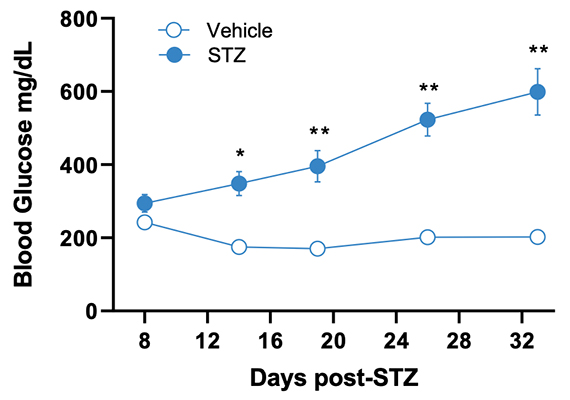
Figure 1. STZ induces Type 1 Diabetes in C57BL/6J male mice. STZ-treated mice (n=8) exhibited higher blood glucose levels compared with vehicle-treated mice (n=4). *p<0.05; **p<0.01.
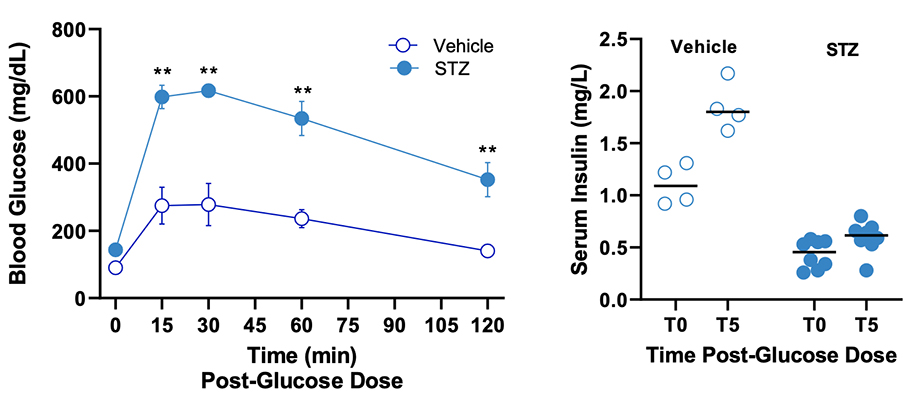
Figure 2. Oral glucose tolerance test and serum insulin assessment in STZ-induced Type 1 Diabetes mice. On study day 21, blood glucose levels were determined prior (T0) and after 15, 30, 60 and 120 min post-glucose administration in STZ-induced Type 1 Diabetes and non-diabetic control mice. STZ-treated mice exhibited higher blood glucose levels compared to vehicle-treated mice. ** p<0.01. Sera insulin was determined at 0 and 5 min post glucose administration. STZ-treated mice exhibited lower serum insulin values compared to vehicle- treated mice.
Example Efficacy Study Using NOD/ShiLtJ Model:
- Female NOD/ShiLtJ (001976) mice, 6-8 weeks of age
- Clinical parameters such as blood and urine glucose collected weekly
- Prophylactic (prior to detection of elevated glucose) or therapeutic (after detection of elevated glucose) dosing
- Histochemical analysis of pancreatic islet cells
Experimental Timeline

Representative Data:
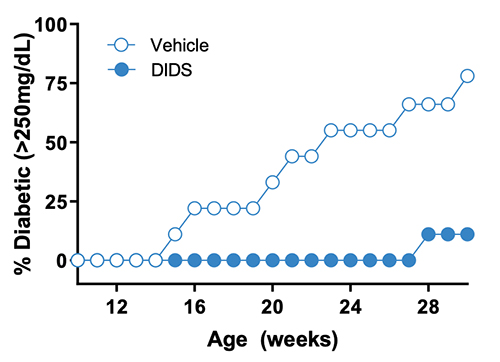
Figure 4. Diabetes Incidence. DIDS treatment decreases blood glucose levels and delays the onset of diabetes.
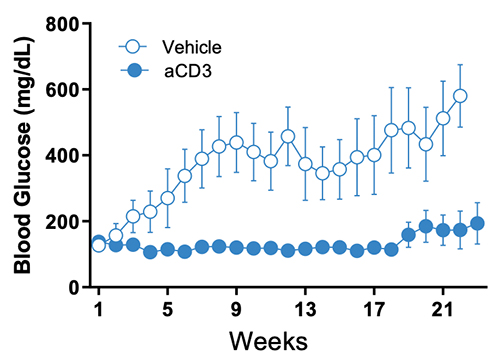
Figure 5. Blood Glucose. anti-CD3 treatment in NOD/ShiLtJ diabetic mice decreases blood glucose levels.